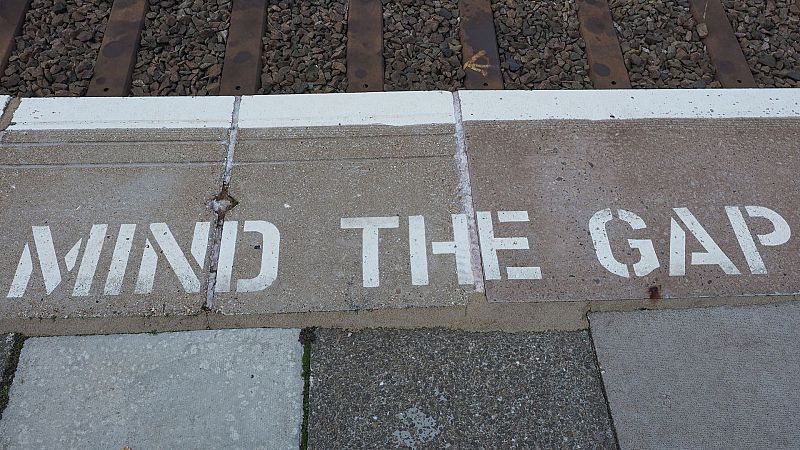
Women in the EU still earned, on average, 12% less than men in 2023, according to Eurostat. The EU's Pay Transparency Directive, which member states must incorporate into their national laws by June 2026, aims to address the gender pay gap.
However, some business groups oppose certain provisions and are calling for an exemption for companies with 100 to 250 employees, rather than limiting it to those with fewer than 50 workers.
The European Trade Union Confederation (ETUC) calculated that blocking the transparency would cost EU women at least €4.8 billion per year, potentially rising to €7.2b. This is equivalent to €465–€700 per woman annually.
Despite these efforts, salary transparency in job postings remains very low in some of Europe's largest economies including Germany, with rates below 20%, according to hiring platform Indeed.
“The European Commission must include strong measures to support equal pay in its upcoming Roadmap for Women’s Rights,” Isabelle Schömann, ETUC Deputy General Secretary, said.
“Equality thrives on transparency. The more we can shine a light on discrimination, the more we can force action to address its injustice.”
ETUC estimates that the companies in Europe with between 100 and 250 employees — which could be subject to a transparency exemption — employ over 10 million women in total.
“Companies have been playing the card of being overburdened by regulation, but it is women workers who for too long have been overburdened with low pay,” Schömann said.
ETUC emphasises that transparency has been shown to be a crucial lever for women workers and their unions to reduce the gender pay gap.
Women in SMEs could lose €465–€700 per year
ETUC found that if pay transparency requirements reduced the gender pay gap by 15%, the gap for 10.4mn women working in enterprises with 100 to 249 employees would decline from €4,640 per year to €3,944. That would result in a gain of around €700 per woman, or €7.2b in total.
With a more conservative estimate of a 10% reduction, the gender pay gap would decrease to €4,176 per year, giving each woman a boost of around €465. In this case, excluding these workers in small and medium-sized enterprises from pay transparency would cost €4.8b annually.
Reporting obligations
ETUC states that lobby group BusinessEurope is advocating for the Commission to exclude the majority of companies covered by the Pay Transparency Directive from gender pay gap reporting requirements. In its report, Reducing Regulatory Burden to Restore the EU’s Competitive Edge, BusinessEurope proposed that “the scope of this article needs to be changed to exclude all SMEs with less than 250 workers from the reporting obligations”.
“BusinessEurope supports reasonable measures to reduce the gender pay gap. Unfortunately, the pay transparency directive imposes very burdensome pay reporting obligations and incomprehensible requirements ...on companies, which will not advance the cause of gender equality. It is a very clear case of necessary simplification,” the organisation told Euronews Business.
Salary transparency significantly varies in top economies
According to Indeed, as of the end of 2024, the UK had the highest salary transparency among six European countries, with 70% of job postings including salary information.
In France, salary transparency stood at 51%, slightly above the 50% mark. In the Netherlands and Ireland, it ranged between 40-45%.
However, Germany (16%) and Italy (19%) lagged significantly behind, with transparency rates falling below 20%.
Reasons behind huge differences
“There is a stark contrast in salary transparency across Europe,” Lisa Feist, an economist at Indeed Hiring Lab, told Euronews Business.
“Labour markets have their marked differences and come with their own history and culture around pay.”
She explained that differences in sectoral composition and wage-setting institutions likely also contribute to these very different transparency levels.
“Surveys indicate that comfort levels in discussing salaries differ significantly across Europe, making the transposition of the EU directive into national law a significant shift for many market participants.” she added.
Transparency supports women and marginalised groups
Lisa Feist also emphasised the key role of salary transparency in addressing the gender pay gap. “Pay transparency—whether through salary data in job ads or early in the hiring process—helps reduce information asymmetry between employers and candidates,” she said.
Noting that women and other marginalised groups often have less access to informal networks and may face penalties for negotiating assertively, she added: “Providing salary information upfront strengthens their position in pay negotiations and promotes fairer outcomes.”
Salary transparency is lowest in high-paid jobs
Indeed data reveals that salary transparency is lowest in high-paying occupations. Among the six countries analysed, cleaning & sanitation had the highest transparency, followed by driving, education & instruction, and food preparation & services.
In contrast, industrial engineering, software development, information design & documentation, project management, and law were among the least transparent job categories.
Employers in high-wage industries tend to be less inclined to disclose salaries. This trend is consistent in five countries, except for the Netherlands.
For example, in France, salary transparency was 68% in low-wage jobs, compared to 39% in high-wage positions. This pattern is even more strong in Ireland: 57% vs 18%.







